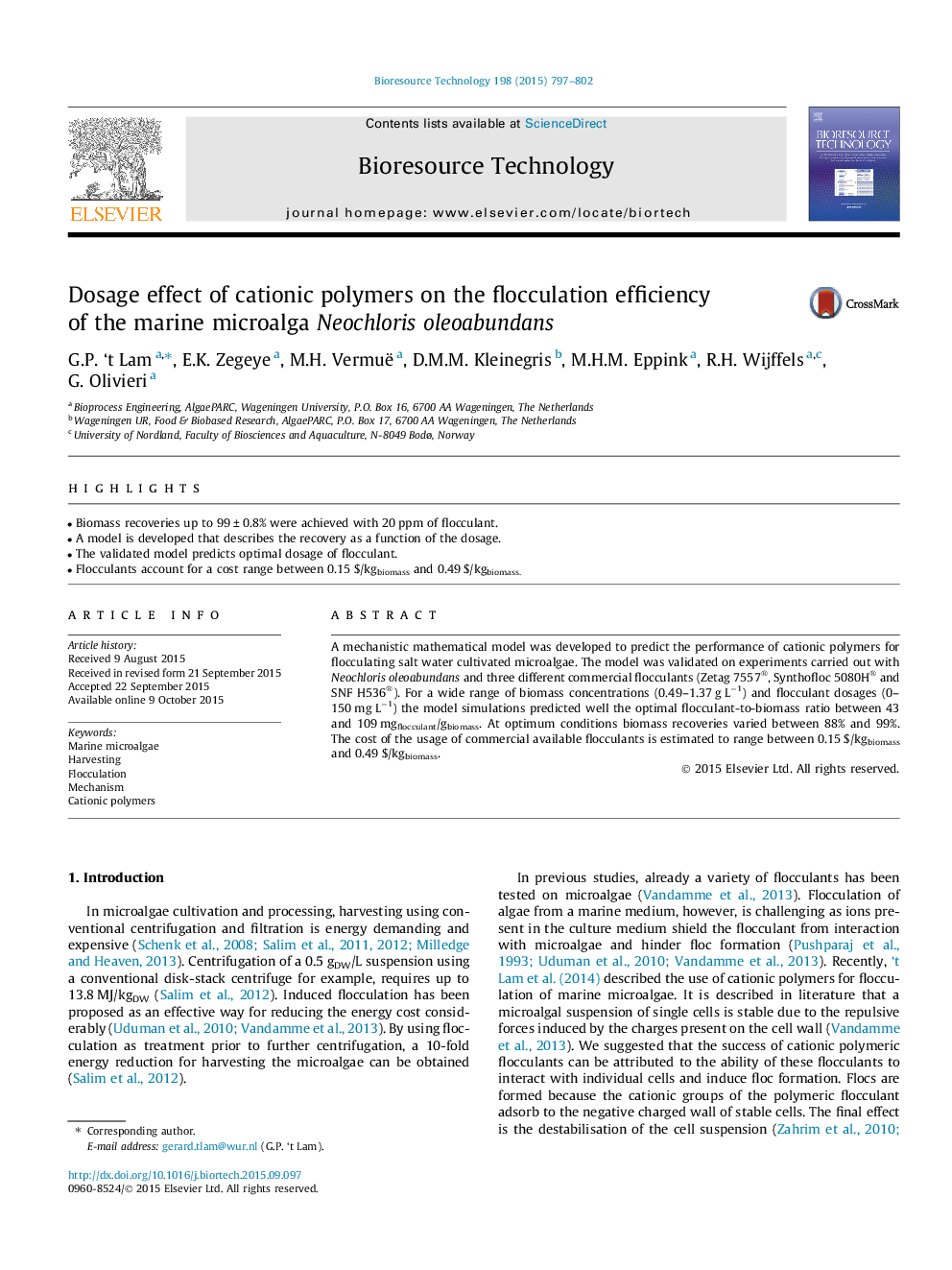| Article ID | Journal | Published Year | Pages | File Type |
|---|---|---|---|---|
| 679480 | Bioresource Technology | 2015 | 6 Pages |
•Biomass recoveries up to 99 ± 0.8% were achieved with 20 ppm of flocculant.•A model is developed that describes the recovery as a function of the dosage.•The validated model predicts optimal dosage of flocculant.•Flocculants account for a cost range between 0.15 $/kgbiomass and 0.49 $/kgbiomass.
A mechanistic mathematical model was developed to predict the performance of cationic polymers for flocculating salt water cultivated microalgae. The model was validated on experiments carried out with Neochloris oleoabundans and three different commercial flocculants (Zetag 7557®, Synthofloc 5080H® and SNF H536®). For a wide range of biomass concentrations (0.49–1.37 g L−1) and flocculant dosages (0–150 mg L−1) the model simulations predicted well the optimal flocculant-to-biomass ratio between 43 and 109 mgflocculant/gbiomass. At optimum conditions biomass recoveries varied between 88% and 99%. The cost of the usage of commercial available flocculants is estimated to range between 0.15 $/kgbiomass and 0.49 $/kgbiomass.
